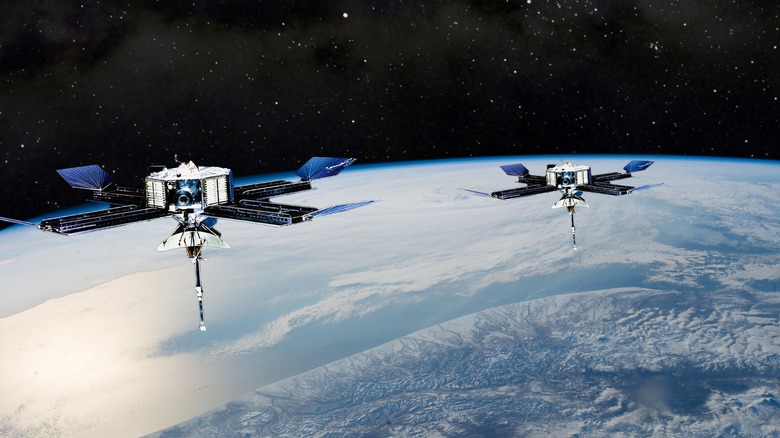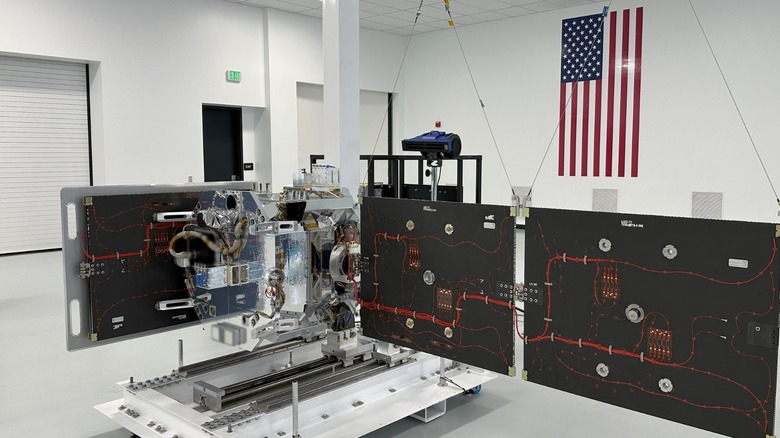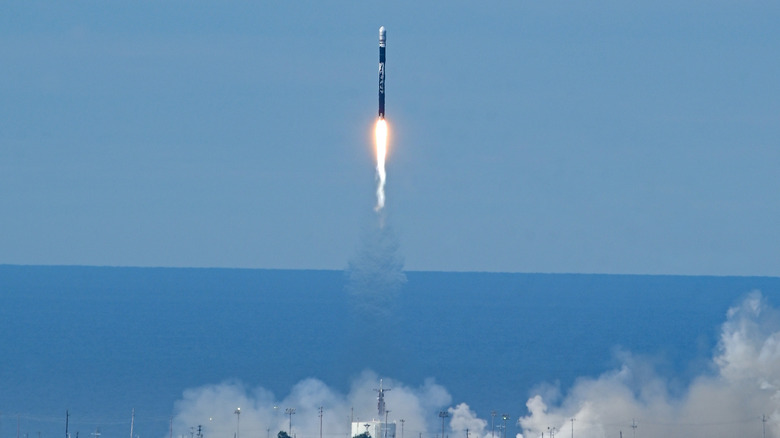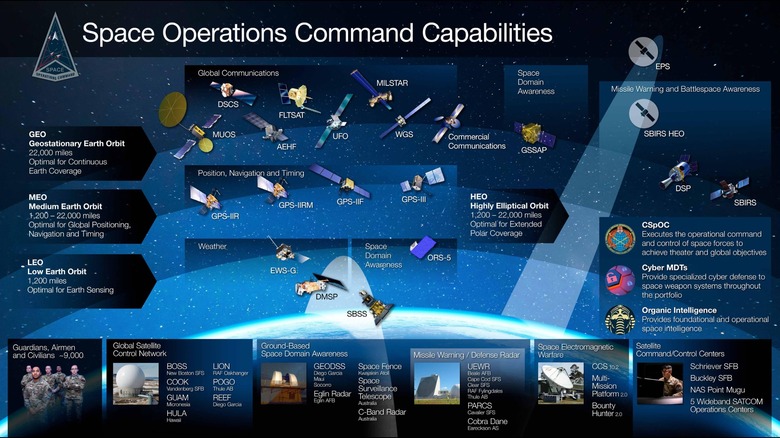The U.S Space Force Just Greenlit A First-Of-Its-Kind Combat Exercise In Outer Space
The U.S. Space Force is about to make history by conducting the first-ever in-orbit combat exercise. On April 11, the Space Systems Command announced that it had signed contracts with two private space companies, Rocket Lab National Security and True Anomaly. These contracts are for providing space vehicles capable of rendezvous and proximity operations (RPO), as well as command and control centers, to support a mission codenamed "VICTUS HAZE" by no later than fall 2025.
During VICTUS HAZE, these vehicles — the Jackal from True Anomaly and an unnamed vehicle from Rocket Lab — will demonstrate what could be the future of space combat. Although details are limited, the exercise will involve complex orbital maneuvers, resembling an old-fashioned aerial dogfight between the two participating satellites. The aim, according to the Space Force, is to learn how to "respond to irresponsible behavior on orbit."
While the U.S. Space Force has conducted simulated on-orbit combat training before, VICTUS HAZE will be the first live-fire exercise of its kind. This marks a significant step forward in the U.S. preparation for the possibilities of space warfare.
What VICTUS HAZE will Entail
Given the vast national security implication of the exercise, details on the exercise itself are expectedly vague. However, General Michael Guetlein, vice chief of space operations for the Space Force, shed some light on the purpose in an interview with Ars Technica. He explained, "When another nation launches a satellite, and we're unsure of its purpose, capabilities, or intentions, we need the ability to investigate."
To simulate such a scenario, True Anomaly's Jackal will launch first to play the role of an "aggressor". Then, Rocket Lab, with its spacecraft on standby, will launch at a later date on the Space Force's order. Then, while in orbit, it'll use its thrusters to approach the Jackal and conduct a series of tight maneuvers around it to perform "inspections" of its hardware. Should the operation go off without a hitch, the two satellites will switch roles and repeat the exercise.
To be clear, this isn't a tabletop "What-if" exercise — the descriptor of VICTUS HAZE as having "operationally realistic conditions" is quite literal. In the past, Russian spy satellites have shadowed U.S. space assets, according to an exclusive Time report. The Kremlin's so-called "satellite inspectors" slowly move into an interception orbit, then maneuver all around the U.S. spy satellite to view it from every angle. They may even contain signal intelligence (SIGINT) modules to snoop on the satellite's transmissions. It's clear that the Space Force is using VICTUS HAZE as the means to develop strategies to respond to such tactics.
Rapid launch capability of the Space Force is also tested
VICTUS HAZE is part of a larger series of military exercises known as "Tactically Responsive Space" (TacRS). The goal, as outlined by the Space Force, is to enable swift and flexible responses to emerging threats in space. This involves exploring ways to significantly reduce the time it takes to launch a satellite. The idea is that if an adversary acts in space, the U.S. can respond quickly by deploying countermeasures before any harm is done.
In a previous mission called VICTUS NOX, the Space Force tested its ability to prepare and launch a satellite in less than 60 hours. This mission was contracted to Firefly Aerospace, which successfully prepped and launched the satellite aboard its Alpha lightweight rocket in just 27 hours. While this may seem slow to the layperson, it's a groundbreaking achievement considering that the Space Force currently takes weeks or even months to launch a payload into orbit. Together, VICTUS NOX and VICTUS HAZE should give the U.S. the flexibility, as well as the know-how, needed to counter and rapidly respond to any unpleasant surprises in space.
Space combat is no longer sci-fi
For decades, the idea of space warfare remained confined to science fiction. However, initiatives like VICTUS HAZE are forcing military leaders to confront the uncomfortable reality of space becoming increasingly militarized.
China has been steadily advancing its anti-satellite (ASAT) capabilities, with the Dong Neng series of kinetic-kill satellite interceptors posing a significant threat to U.S. satellites today. Russia has also pursued its own ASAT ambitions. Most recently, in February, U.S. intelligence raised concerns that Russia might possess an orbital weapon capable of using a nuclear warhead to disable U.S. satellites en masse in potential conflicts.
While the U.S. has developed destructive ASAT weapons in the past, like the ASM-135 ASAT, they were never deployed. Moreover, the White House pledged to stop testing direct-ascent anti-satellite (DA-ASAT) weapons in 2022. The Pentagon isn't conceding space to adversaries, though. The 75th Intelligence, Surveillance, and Reconnaissance Squadron (ISRS), the sole unit responsible for orbital combat in the Space Force, has stated it can engage "adversary space force and counterspace force."
Although the U.S. has seemingly abandoned DA-ASAT weapons, it may explore alternatives like electronic jammers, such as the Counter Communications System (CSS) currently in use. These options potentially offer greater flexibility and cause less collateral damage in the form of space debris compared to DA-ASAT weaponry. It's unclear if these weapons will be part of the upcoming VICTUS HAZE test, but given the current trends, it's all but certain that they'll be demonstrated in future similar exercises.



